Recently, there's been a buzz about new design and build projects, let's explore 6 Design Trends in Early Learning Centres that is taking centre stage.
Back in the day, major health facility expansions to state-wide early learning center programs and low-cost social housing projects might have been simple and straightforward, but today, things are different.
Today, the landscape is evolving with every facility wants to stand out and provide top-notch customer experiences. This has led to a heightened focus on crafting engaging and inclusive spaces, where design plays a crucial role in shaping daily interactions for children, parents, and educators.
Let’s dive into six design trends in early learning centers that are making their way to shape the use of space, interactions, and acting as silent educators.
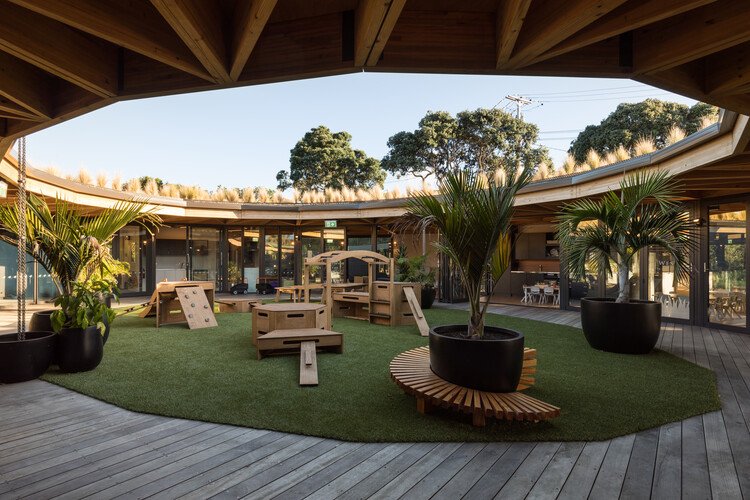
Biophilic Design: Immersing Nature Indoors
Similarly, sustainability is also taking center stage in many projects. Government bodies are now incentivising and supporting sustainability initiatives in various capital works programs. For instance, as part of its forward-thinking Sustainable Building Policy, the City of Greater Geelong, a local government area in Australia, has completed The Highton Child and Family Centre.
With its impressive six-star energy rating, the project stands as a flagship for other council projects currently under construction. From responsibly sourced materials for the building’s construction to surpassing Australian standards for climate adaptation, this center sets a high bar for sustainability.
In this project, sustainability is woven into every element, making it a valuable case study for those interested in the performance of asset lifecycles. The eco-friendly materials used include carpet tiles made from reclaimed fishing nets, wood-like products from pine dust and recycled plastic bottles, and linoleum crafted from linseed oil. Energy-efficient lighting, along with sustainable construction practices like using reclaimed water and recycled aggregates for concrete, further solidify the commitment to sustainability.
In essence, early learning centers are evolving into not just learning spaces but also platforms for instilling crucial lessons on sustainable living for the community’s youngest members.
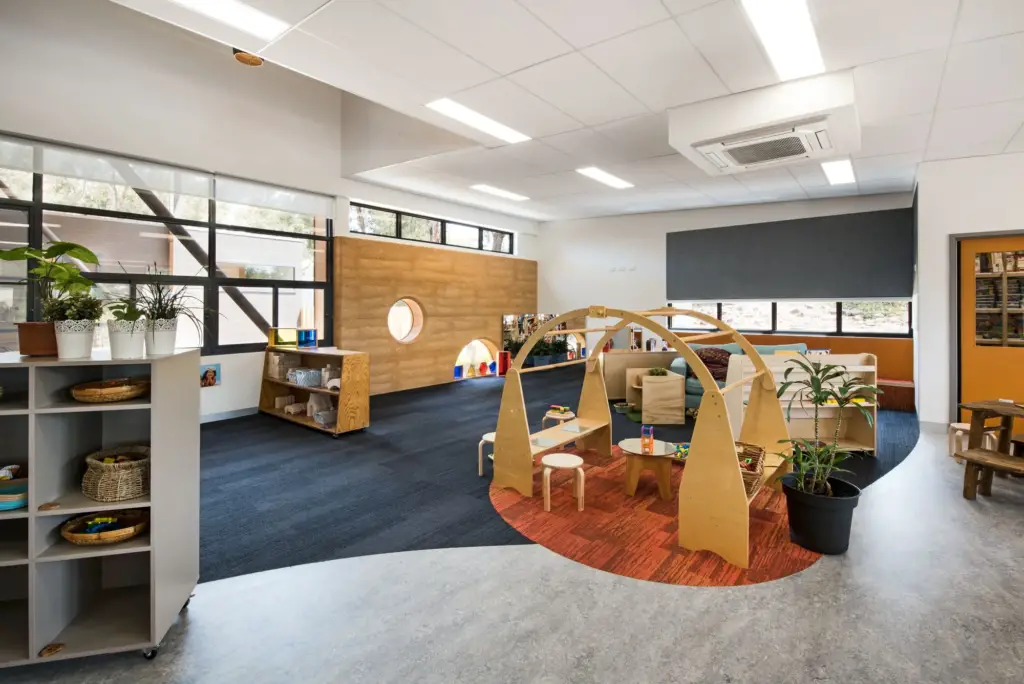
Sustainability Takes Center Stage
Cultural sensitivity is a fascinating aspect to consider. With the ongoing global migration, each country boasts its unique cultural tapestry, providing designers with the opportunity to showcase them.
Integrating elements from our diverse cultures into early learning center designs creates visually enriched learning spaces and fosters a profound sense of inclusivity for our young ones. This mindful approach ensures that every child, regardless of their background, feels intricately connected to a broader cultural narrative.
For instance, the Regional Early Education & Development Inc (REED), a provider of early education services, introduced Yarning Circles into their center designs to serve as focal points for bringing children and educators together.
Culturally, yarning circles are used among Aboriginal and Torres Strait Islander peoples to share stories, knowledge, and traditions. This feature is increasingly common in early learning centres with active local communities, where students engage in discussions, share stories, and exchange ideas.

Cultural Sensitivity in Design
Cultural sensitivity is a fascinating aspect to consider. With the ongoing global migration, each country boasts its unique cultural tapestry, providing designers with the opportunity to showcase them.
Integrating elements from our diverse cultures into early learning center designs creates visually enriched learning spaces and fosters a profound sense of inclusivity for our young ones. This mindful approach ensures that every child, regardless of their background, feels intricately connected to a broader cultural narrative.
For instance, the Regional Early Education & Development Inc (REED), a provider of early education services, introduced Yarning Circles into their center designs to serve as focal points for bringing children and educators together.
Culturally, yarning circles are used among Aboriginal and Torres Strait Islander peoples to share stories, knowledge, and traditions. This feature is increasingly common in early learning centres with active local communities, where students engage in discussions, share stories, and exchange ideas.
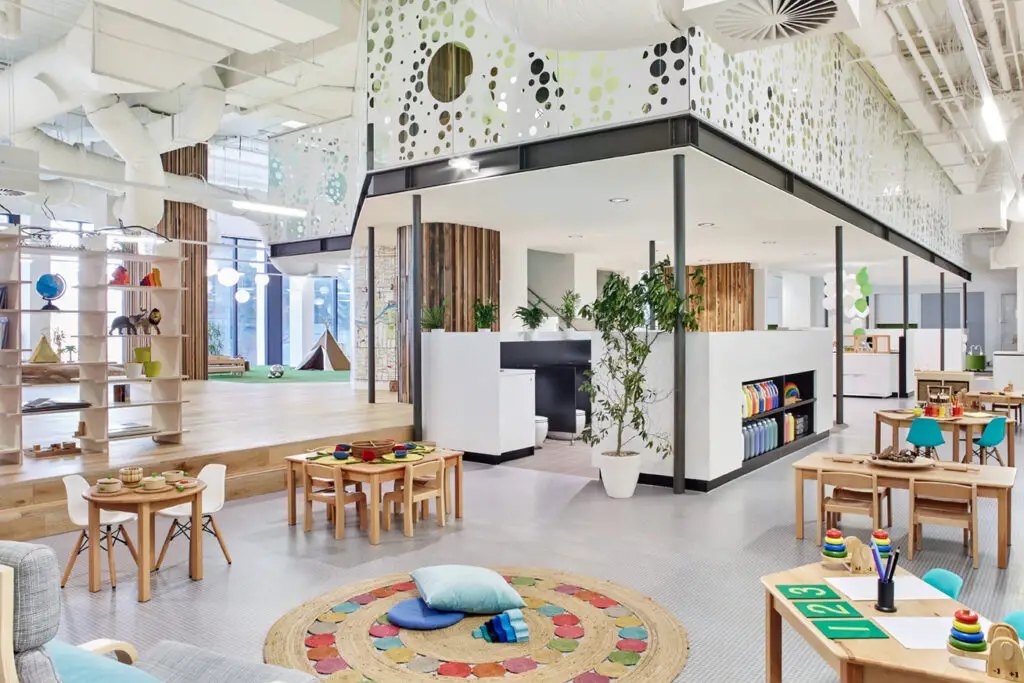
Flexibility for Varied Learning Experiences
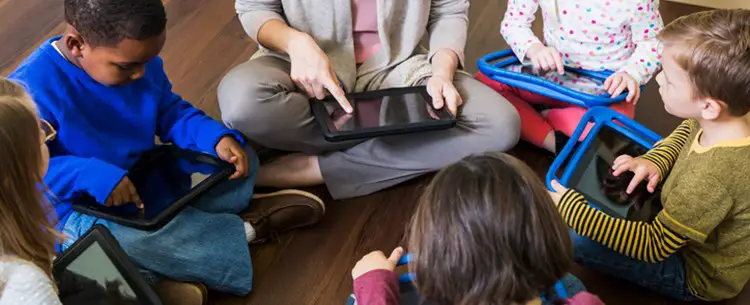
Technology Integration in Moderation
Ever noticed how kids aged 2 and 3 interact with technology?
Well, today’s children are born into the digital era and making interactions with technology a natural part of their being. It’s fascinating to see how they effortlessly navigate digital devices, showcasing their innate comfort with technology from a young age.
It is important for us to recognise the pivotal role of technology in education, and incorporate this into the centre’s design. At a recent early learning conference in Australia, exposure to digital technology was described as ‘essential for child development’. This underscores the careful consideration of technology integration, viewing it as a supportive tool without overshadowing fundamental developmental aspects. The strategic inclusion of smart classroom setups and age-appropriate educational tools enhances traditional learning methods rather than replacing them.
Incorporating technology into children’s development and education plans enables the creation of lessons catering to various learning styles. Visual learners can utilise smart boards or tablets for drawing and visual aids, while those favouring reading/writing can absorb information or jot down ideas using the same media. Auditory learners benefit from music streaming platforms or audiotapes, and tactile learners can engage by acting out scenes seen in videos or using interactive media on smart devices.
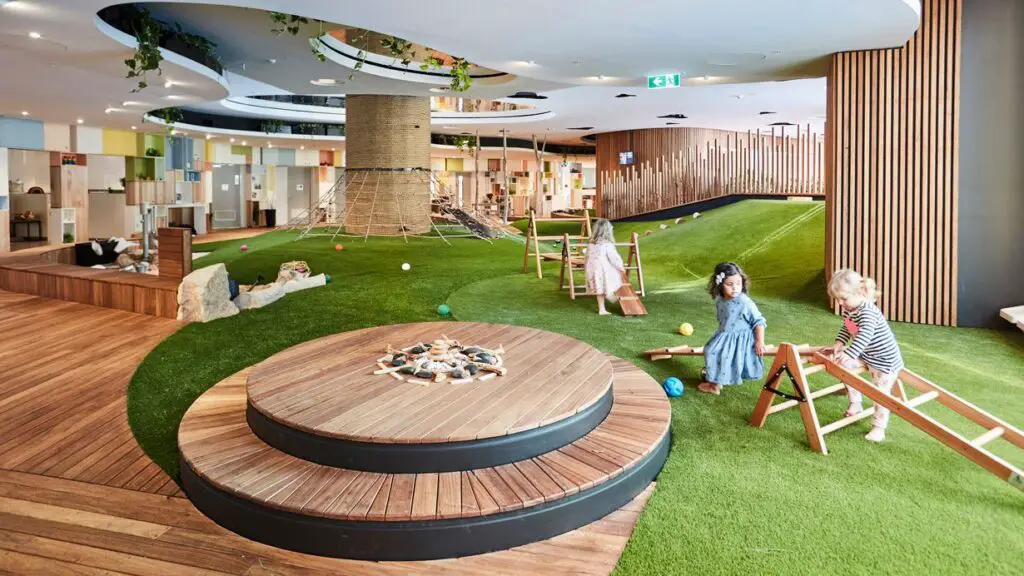
Safety and Wellness Considerations
Ensuring safety and promoting wellness are critical considerations in the design of early learning centres.
Now more than ever, it is important for us to create environments that prioritise the well-being of children through careful planning and attention to various aspects.
Some of the key considerations for safety and wellness include the layout of the space with clear sightlines, separate areas for different age groups to address specific safety issues, impact-absorbing surfaces in outdoor play areas, fencing and gates to prevent unauthorised access, and bathroom facilities with child-friendly fixtures. Additionally, designing spaces that minimise noise levels and consider the needs of children with diverse abilities is essential.
As early learning operators worldwide remain committed to creating nurturing and enriching environments, the evolving design trends in early learning spaces will continue to play a crucial role in shaping and creating better learning experiences for our youngest members in the communities.
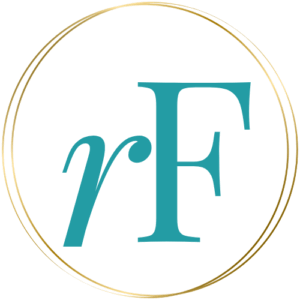
Join a global community of readers for exclusive tips, strategies, and resources to help you level up your life, career, and personal goals.
I will never spam or sell your info. Ever.


